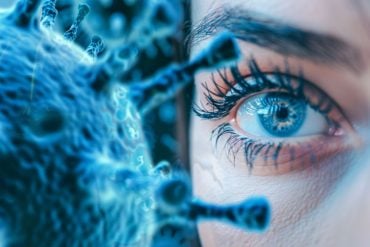Summary: A new study reveals the role of touch in early self-recognition among toddlers. By using vibrating discs to encourage babies to touch their faces, researchers found these children developed self-awareness earlier than their peers.
This breakthrough challenges previous beliefs that self-recognition is hardwired, suggesting it’s influenced by sensory experiences. The findings could reshape interventions for children with motor development delays, highlighting the importance of self-directed exploration for self-knowledge.
Key Findings:
- Toddlers who were prompted to touch their own faces through vibrating discs began recognizing themselves in mirrors about two months earlier than typically expected.
- The study suggests that self-recognition develops from self-directed activities, rather than being an innate ability.
- The research has implications for improving intervention strategies for infants with motor skill delays, emphasizing the significance of exploring one’s own body.
Source: UT Austin
Most babies begin recognizing themselves in mirrors when they are about a year and half old. This kind of self-recognition is an important developmental milestone, and now scientists at The University of Texas at Austin have discovered a key driver for it: experiences of touch.
Their new study found babies who were prompted to touch their own faces developed self-recognition earlier than those who did not.
The research was published this month in the journal Current Biology.
“This suggests that babies pulling on their toes or tapping their fingers are not just playing,” said Jeffrey Lockman, a professor of human development and family sciences at UT and senior author on the paper.
“They are developing self-awareness through self-directed activity. I think this work demonstrates a possible mechanism by which self-recognition can develop based on active experience that human babies naturally generate.”

Researchers began by placing small vibrating discs on the foreheads and cheeks of toddlers when they were around 14 months old, before the usual age at which self-recognition occurs. In response to the vibration, the children would reach up and touch the disc. Next, researchers turned the children to face a mirror and watched as they reached up to touch the discs.
Researchers then had the children perform the standard mirror-mark test for self-recognition in which a small mark of paint or makeup was placed on each child’s face. If the child looked in the mirror and touched the mark on their own face or said words like their name or “me,” they demonstrated self-recognition.
Researchers also observed a control group of children who were exposed to the laboratory experience with mirrors but not the vibrating discs. Both groups were comparable at the beginning of the study and observed monthly until they recognized themselves or reached 21 months.
The children who touched their face more frequently recognized themselves in the mirror about two months earlier, on average, than when children typically first begin to recognize themselves in a mirror.
The study challenges a longstanding assumption that self-recognition in early childhood is somehow hardwired. For a long time, scientists believed early recognition in the mirror was a built-in function of human brains and those of our closest primate relatives, versus linked to sensory or motor experiences.
The researchers said the findings may have implications for interventions for children with motor development delays.
“Interventions for infants who have issues related to motor skills are typically focused on reaching for objects in the external world and manipulating them,” Lockman said. “These findings suggest that reaching to the body may be equally important and that exploring the body is the gateway to self-knowledge.”
Lisa Chinn of the University of Houston and Claire F. Noonan and Katarina S. Patton of Tulane University were also authors on the paper.
About this neurodevelopment research news
Author: Esther Robards-Forbes
Source: UT Austin
Contact: Esther Robards-Forbes – UT Austin
Image: The image is credited to Neuroscience News
Original Research: Closed access.
“Tactile localization promotes infant self-recognition in the mirror-mark test” by Lisa K. Chinn et al. Current Biology
Abstract
Tactile localization promotes infant self-recognition in the mirror-mark test
Mirror self-recognition has been hailed by many as a milestone in the acquisition of self-awareness with respect to phylogenesis and human ontogenesis.
Yet there has been considerable controversy over the extent to which species other than humans and their closest primate relatives are capable of mirror self-recognition, and to the mechanisms that give rise to this ability.
One influential view is that mirror self-recognition in humans and their closest primate relatives is a cognitive advance that is a product of primate evolution, stemming from more recently evolved neural structures and networks that develop through experience-independent mechanisms during ontogenesis.
In contrast, we show that the development of mirror self-recognition in human infants is a perception-action achievement, building on infants’ ability to localize and reach to targets on the body.
Infants who were given experience reaching to tactile targets on their bodies in the months prior to recognizing themselves in a mirror achieved mirror self-recognition earlier than infants in either a yoked age-matched control group or a longitudinal control group without such experience.
Our results demonstrate that self-touch functions as an intermodal gateway through which infants learn how to localize and reach to stimuli on their bodies, including those that can only be seen in a mirror.
These findings identify an overlooked role for the routine activity of self-touch in establishing a representation of the body and suggest that the development of human self-awareness is rooted in self-directed action.






